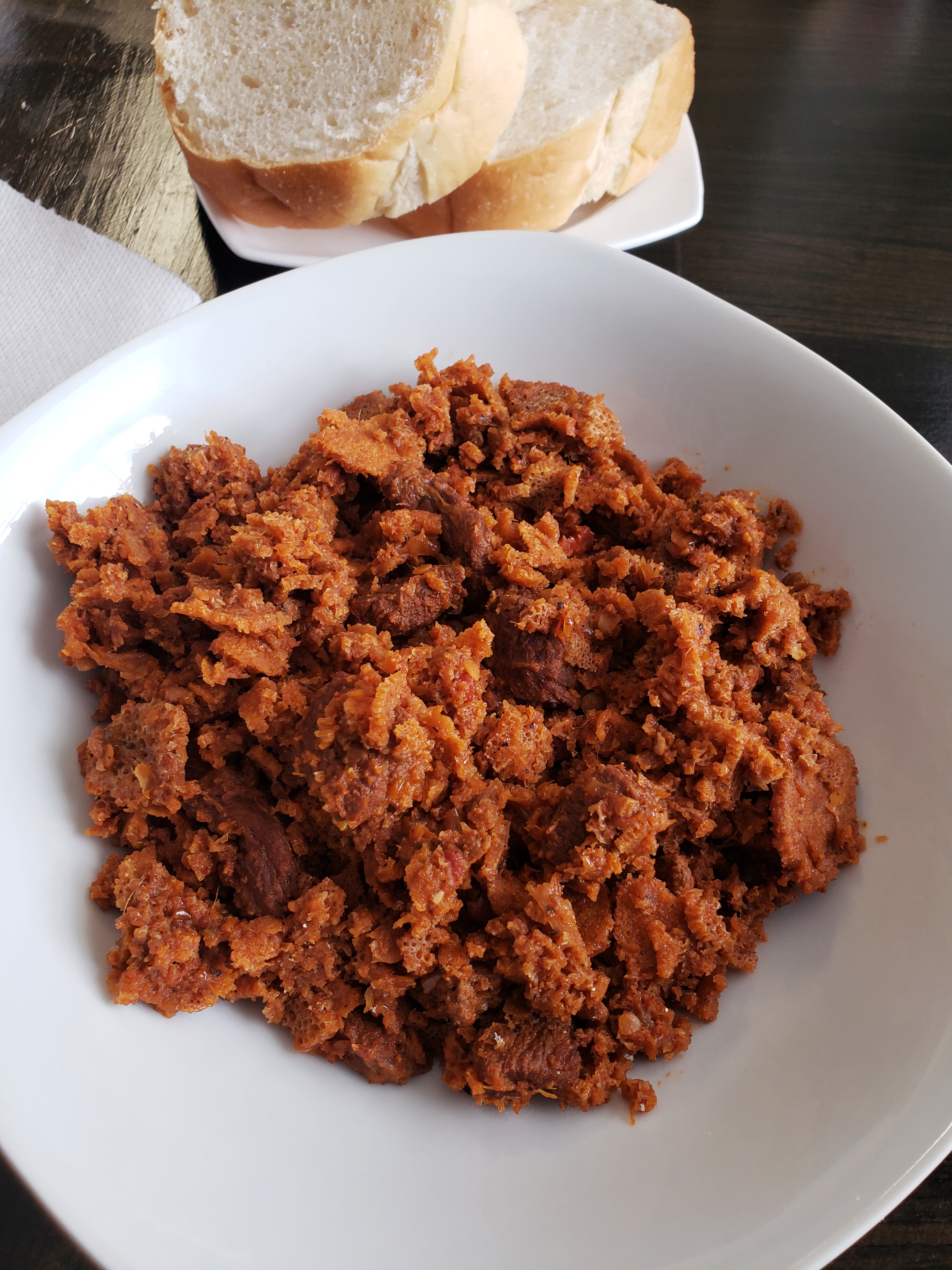Ethiopian Firfir with Dried Beef (Quanta Firfir)

This is a popular traditional Ethiopian dish. Please enjoy. This recipe can also be made with fresh beef or lamb!
INGRIDIENT
DIRECTION
Step: 1
Place onions in a large saucepan over medium-high heat. Cook, covered, until starting to brown, about 5 minutes. Add vegetable oil and garlic paste; cook until fragrant, about 5 minutes. Stir in tomatoes; cook until softened, 5 to 7 minutes.
Step: 2
Stir 1/2 cup water, dried beef, and berbere seasoning into the saucepan. Reduce heat to medium and cook until flavors combine, about 10 minutes. Continue cooking, adding 1/3 cup water every few minutes, until beef is softened and sauce is thick, about 20 minutes. Stir in kibbeh and salt.
Step: 3
Tear 1 injera into palm-sized pieces; fold gently into the sauce. Serve beef and sauce over whole injera.
NUTRITION FACT
Per Serving: 463 calories; protein 23.8g; carbohydrates 22.7g; fat 31g; cholesterol 96mg; sodium 3031mg.
The word “stew” can process to 2 time a dish and a make dishes method. Stewing involves not fast cooking piece of meat, raw fruit or beans in a tastefull liquid . It’s same as to braising, instead it does have a few notable differences. The raw animal vested is chopped into smaller pieces but of being processing menu all of it , and the liquid all of it covers the contents in a stew as different to a braise’s halfway full . When meat or raw fruit are cooked using this method, the resulting dish is called stew.
Stew has a perception for being a rib-sticking meal that warms you up on a freezing , winter day. It’s true ; a bowl of classic beef stew can make warming featured food , but stew’s comfort factor goes way beyond protecting you from the cold . It’s all about those tender chunks of meat and vegetables, swimming in a thick, ultra-rich gravy. The way they come together creates the ultimate comfort food, no matter the weather.





